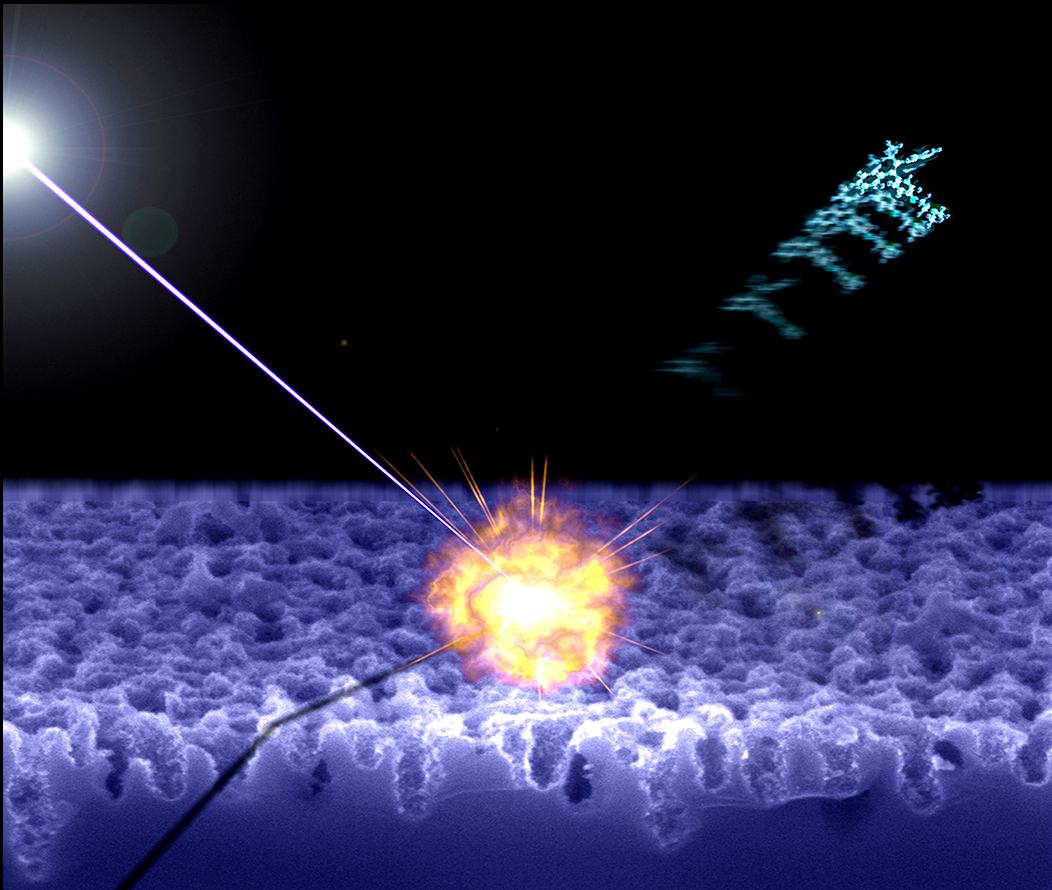Desorption Ionization On Silicon on:
[Wikipedia]
[Google]
[Amazon]
 Desorption/ionization on silicon (DIOS) is a
Desorption/ionization on silicon (DIOS) is a
 Desorption/ionization on silicon (DIOS) is a
Desorption/ionization on silicon (DIOS) is a soft laser desorption Soft laser desorption (SLD) is laser desorption of large molecules that results in ionization without fragmentation. "Soft" in the context of ion formation means forming ions without breaking chemical bonds. "Hard" ionization is the formation of ion ...
method used to generate gas-phase ions for mass spectrometry
Mass spectrometry (MS) is an analytical technique that is used to measure the mass-to-charge ratio of ions. The results are presented as a '' mass spectrum'', a plot of intensity as a function of the mass-to-charge ratio. Mass spectrometry is u ...
analysis. DIOS is considered the first surface-based surface-assisted laser desorption/ionization (SALDI-MS) approach. Prior approaches were accomplished using nanoparticles in a matrix of glycerol, while DIOS is a matrix-free technique in which a sample is deposited on a nanostructured (porous silicon) surface and the sample desorbed directly from the nanostructured surface through the adsorption of laser light energy. DIOS has been used to analyze organic molecules, metabolites, biomolecules and peptides, and, ultimately, to image tissues and cells.
Background
Soft laser desorption is a softionization
Ionization, or Ionisation is the process by which an atom or a molecule acquires a negative or positive Electric charge, charge by gaining or losing electrons, often in conjunction with other chemical changes. The resulting electrically charged a ...
technique which desorbs and ionizes molecules from surfaces with minimal fragmentation. This is useful for a broad range of small and large molecules and molecules that fragment easily. The first soft laser desorption techniques included Matrix-assisted laser desorption/ionization
In mass spectrometry, matrix-assisted laser desorption/ionization (MALDI) is an ionization technique that uses a laser energy absorbing matrix to create ions from large molecules with minimal fragmentation. It has been applied to the analysis of ...
(MALDI) nanoparticles in glycerol. In MALDI, the analyte is first mixed with a matrix solution. The matrix absorbs energy from the laser pulse and transfers it to the analyte, causing desorption and ionization of the sample. MALDI generates +Hsup>+ ions.
DIOS was first reported by Gary Siuzdak
Gary Siuzdak is an American chemist best known for his work in the field of metabolomics, activity metabolomics (a termed coined in 2019), and mass spectrometry. His lab discovered indole-3-propionic acid as a gut bacteria derived metabolite in 20 ...
, Jing Wei and Jillian M. Buriak in 1999. It was developed as a matrix-free alternative to MALDI for smaller molecules. Because MALDI uses a matrix, background ions are introduced due to ionization of the matrix. These ions reduce the usefulness of MALDI for small molecules. In contrast, DIOS uses a porous silicon surface to trap the analyte. This surface is not ionized by the laser, therefore creating minimal background ionization and thus allowing for the analysis of small molecules.
Applications
DIOS has been shown to be an ultra-sensitive means of generating and detecting molecules at the yoctomole level, both for DIOS nanostructured surfaces modified with fluorocarbons, and a subsequent related technology known as Nanostructure-Initiator Mass Spectrometry and/or Nanostructure Imaging Mass Spectrometry (NIMS). DIOS has been shown to detect peptides, natural products, small organic molecules, and polymers with little fragmentation. DIOS can be used forproteomics
Proteomics is the large-scale study of proteins. Proteins are vital parts of living organisms, with many functions such as the formation of structural fibers of muscle tissue, enzymatic digestion of food, or synthesis and replication of DNA. In ...
. It has been reported as a useful method protein identification. Because it is matrix free, it can be used to identify smaller biomolecules than MALDI. In addition, it can be used to monitor reactions on a single surface through repeated MS analyses. Reaction monitoring can be used to screen enzyme inhibitors.
Atmospheric pressure DIOS was shown to be an effective tool for quantitative analysis of drugs with high proton affinity.
The use of DIOS to image small molecules has been demonstrated. Lin He and coworkers imaged small molecules on mouse liver cells. They also used marker molecules to image HEK 293 cancer cells.
References
Mass spectrometry {{analytical-chemistry-stub